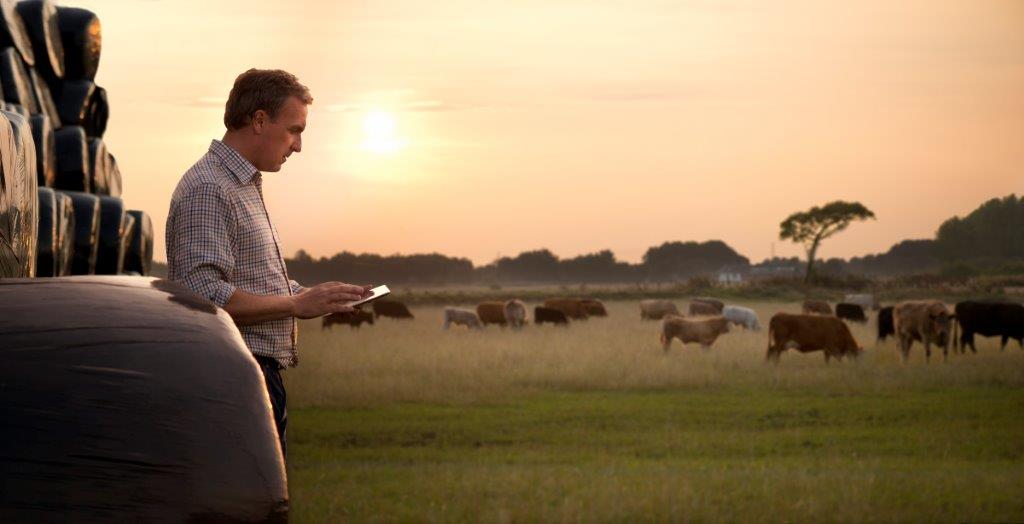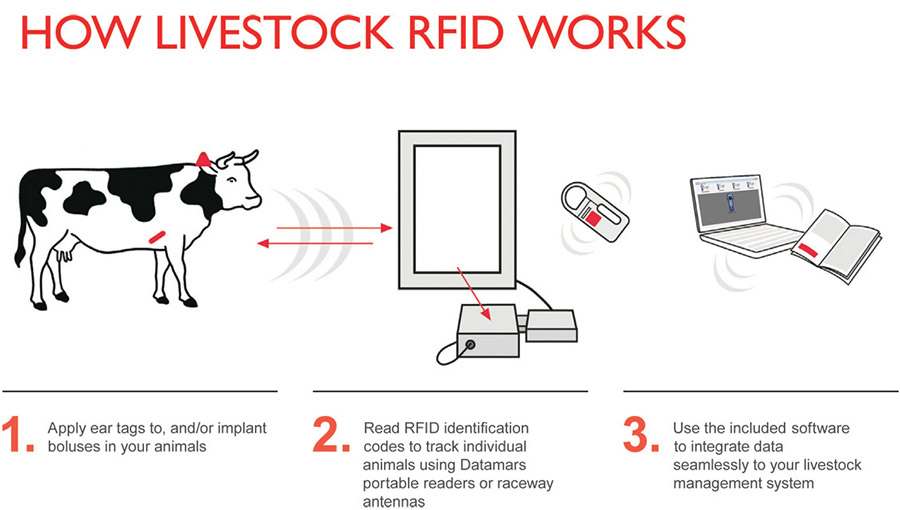- Home
- Symmetry Blog
- Designing Smart Farms
Designing Smart Farms: Using Sensors to Improve Management and Productivity on Cattle Farms
Wednesday, June 3, 2015

Farming is under continuous pressure to deliver quality product at the lowest possible price. As a result, the farmer’s margins are under constant pressure.
To ensure the farmer achieves the maximum possible margin, the efficiency of the farming process needs to be optimized. In the context of dairy cattle, this means achieving the maximum output per animal in the most efficient way over the course of its life. In terms of beef cattle, this means achieving the best animal weight and meat quality in the shortest time and for the lowest cost possible.
As the herd grows it becomes more and more difficult for the farmer to individually monitor each animal’s behavior and health. Without the use of monitoring technology and software, a problem with a particular animal may not be noticed until it has reached an advanced stage and requires more dramatic intervention than would have been necessary had the issue been detected earlier.
The 7 Key Areas in Herd/Cattle Management
- Maintenance of general animal health: The monitoring of the health of each animal in the herd is crucial since each animal represents a considerable investment for the farmer. However, as the herd grows it becomes increasingly difficult to effectively monitor each animal.
- Rumination: Rumination is a part of normal digestion, in which the animal brings up swallowed food, chews it, and swallows it again. This aids the animal by allowing it to eat quickly and chew later while it is resting. By monitoring the animal’s rumination behavior it is possible to detect departures from the norm and thereby take corrective action before a serious problem develops.
- Detection of ill health / disease: There are a lot of common diseases that can be detected earlier by noting changes in animal behavior.
- Ketosis: Detecting ketosis, a metabolic disorder, early in its onset is crucial to farmers. If left untreated, a cow with ketosis will stop lactating within approximately 14 days. Prior to developing the disease cows spend less time eating and may show other behavioral symptoms, including changes in gait.
- Mastitis: Mastitis is an inflammatory reaction of udder tissue to bacterial, chemical, thermal, or mechanical injury, and is the most common disease in dairy herds. It’s been estimated that without an effective mastitis control program, up to 40% of cattle in the herd can be infected in 6 months.
- Milking: It is important that lactating cows are milked at regular intervals. Failure to do so leads to a reduction in lactation rate and a loss of revenue to the farmer.
- Estrous detection: Cows and pigs are known as polyestrous animals, and can go into heat several times a year. The detection of when an animal is in heat is very important to the farmer so that he can make appropriate breeding choices for his herd, including determining when to breed calves for the first time and when cows that have previously calved should be bred again to maintain milk production.
In addition to the key factors above, we need to consider that farms raising livestock or agriculture are generally spread over a significant area. It is nearly impossible for a small group of people to keep track of such a large piece of land. Hiring extra workers means incurring a higher operating cost, and even a heavy investment in training cannot fully eliminate the possibility of human error.
If farms can be turned into “Smart Farms”, akin to the concept of smart cities, farmers’ lives can be made easier and the benefits will trickle down into the products produced by these farms.
Technical Solutions to Combat the Challenges Faced by Farmers
From the above, it is clear that we require up to date and accurate information about each member of the herd in order to ensure early detection of health problems. This will indirectly maximize output from each member of the herd and bring more revenue to the farmer.
What is required now is a scheme to automatically collect this information, analyze it, and present the results of that analysis to the farmer in a form that allows the farmer to make sensible herd management decisions. This will also help improve the existing techniques used to monitor the livestock, production, and utilization of forage crops and pasture.
Early Solutions – RFID
Not long ago, we had extensive use of RFID technology in the fields of agriculture and animal husbandry to track and identify moving animals and control inventory. RFID tags were installed in animals that needed to be tracked and by installing readers around the farm, the movement of that animal through the simple daily processes of eating, drinking, entering and leaving various places on the farm could be tracked, recorded, and logged to a central database system for inspection.

Image Source: http://www.datamars.com/markets/livestock-id/
This RFID system did bring about certain advantages, but did have a few disadvantages as well:
- It could not track animal in real time; it could not identify where the animal was on the farm at a particular moment in time, but could tell if an animal had passed a specific location at a specific time.
- It was unable to give any detailed information about the current state of animal, such as body temperature, environment, or activity level.
How to Account for the Information RFID Systems Cannot Provide
Wireless sensor technology can provide detailed information about the current state of animal, such as temperature, humidity of surroundings, activity level, and more. Real time location systems (RTLS) technology can be used to keep track of an animal’s continuous movement around the farm. Wireless sensor monitoring and RTLS can provide much more data than RFID technology alone.
With the combination of RFID, RTLS, and wireless sensor networks, every detail about the animals can be easily tracked. That data can then be used to control, monitor, and regulate herd activity and the facilities allocated to the animals.
Putting it All Together
All of the information gathered from the farm via RFID, wireless sensors, and RTLS infrastructure needs to be passed on to a central processor on the farm to collect, analyze, and present data in such a way that the farmer receives an instant and actionable summary.
What if these results need to be passed on to a remote owner who still needs to keep track of the herd’s health and the condition of the farm? Cellular and Wi-Fi technologies can send the collected data and processed results to the cloud, where it can then be accessed remotely from a smartphone or tablet.
How Symmetry Can Help
Symmetry Electronics can provide all of the above solutions to implement a well-managed farm. Symmetry offers CAEN RFID tags and readers required to continuously track an animal’s movement through different areas of the farm by installing readers at specific locations. CAEN also manufactures a variety of tags, including temperature logger tags to help maintain vaccines, drugs, and products that must remain within a prescribed temperature range to maintain their efficacy. Temperature loggers an also be used to monitor food to maintain its freshness.
The next step in the evolution of animal management systems is to have continuous real-time information about the location and state of the animal. This necessitates a real time location system (RTLS). Symmetry also offers integrated real time location systems. RTLS implemented for animal management requires high accuracy location and high precision, which can be provided by the DW1000 device from Decawave.
Symmetry has a variety of sensors measuring temperature, position, humidity, linear Hall effect, and gas, which can be installed at different locations both inside and outside the farm to track critical parameters. Additionally, Symmetry stocks wireless lines such as GainSpan, Lantronix, Redpine Signals, and Silicon Labs to provide advanced Wi-Fi modules, and cellular lines such as Telit, Multitech, and Janus to provide robust cellular routers.
Call us at (310) 536-6190 or contact us online for any more information on the products required for your farm.
*Information sourced from Decawave Application Note "Designing Infrastructure for Tagged Pigs in the Barn: An Introduction to the DecaWave DW1000 RTLS Solution in Agricultural Applications"